Remarkable Kailashanatha Temple And Unique Passage Of Life Cycle Including Aging, Death And Rebirth
A. Sutherland - AncientPages.com - The famous Kailashanatha Temple in Kanchipuram, Tami Nadu India, was built in the 8th century during the reign of a South Indian Pallava Dynasty (275 CE to 897 CE) by the great king Raja Simha Pallava.
Kailasanathar Temple in Kanchipuram, Tamil Nadu. Image credit: Ssriram mt/wikipedia
It is a temple closely connected with the life history of saint Poosalaar , who was a devotee of Lord Shiva.
It is the largest temple built by the Pallavas, who became passionate temple builders. These kings were the first to build stone temples in the Tamil country and later experimented with carving temples in stone.
Dedicated to Lord Shiva, Kailashanatha Temple (means “Lord of the Cosmic Mountain”), was built in the tradition of temples that celebrate the cosmic mountain with the summit, which is not only the highest point of the earth but also the earth's navel, the point at which the Creation began.
Kailashanatha Temple is the oldest in Kanchipuram, a former Pallava capital (7th - 9th century) and one of the seven sacred cities under Hinduism. The city is approx. 75 kilometers (47 mi) from Chennai, the capital city of Tamil Nadu.
Some of the oldest books of the Sanskrit written about the 3rd or 2nd centuries BC, mention Kanchipuram, which is believed to have been part of the mythical Dravida Kingdom of the Mahabharatha.
It is the oldest temple in Kanchipuram, which was the capital city during the Pallava Dynasty and one of the seven sacred cities under Hinduism. Image credit: Ilamurugan
The temple, of which the architect is unknown, was commissioned by Narasimhavarman II commonly known as Rajasimha (r. 700 - 728 CE), a ruler of the Pallava kingdom, who is also credited with the construction of several other temples.
The structure is decorated with a large number of carvings, including many half-animal deities, especially popular during the early Dravidian architectural period.
There are 58 shrines, built into niches, which are dedicated to various forms of Shiva. The main shrine has a 16 sided Shivalinga carved in black granite. The Shivalinga in this temple is 10 feet high.
Kailasanathar Temple with an inner court or the circumambulatory passage with 58 sub shrines. Image credit: R. Mayooranathan - Public Domain
Perhaps the most remarkable and very unique feature of the temple is the so-called “circumambulatory passage”. This is a place associated with many great symbols.
The passage enables moving around a sacred object or idol. After climbing seven steps to reach this most unusual passage, devotees must crawl through it.
The crawling has a symbolic meaning of great importance; it is namely similar to passing through the life cycle including the aging process, death, and rebirth.
Crawling and finally leaving the passage symbolize coming out of the mother's womb and also explains Hindu's belief in rebirth.
Written by – A. Sutherland AncientPages.com Staff Writer
Copyright © AncientPages.com All rights reserved. This material may not be published, broadcast, rewritten or redistributed in whole or part without the express written permission of AncientPages.com
Expand for referencesMore From Ancient Pages
-
 Two Vikings From The Same Family Reunited After 1,000 Years
Archaeology | Jun 15, 2021
Two Vikings From The Same Family Reunited After 1,000 Years
Archaeology | Jun 15, 2021 -
 Mysterious Location Of The Amazing Land Of Punt – Can This Puzzle Be Solved One Day?
Featured Stories | Jul 18, 2016
Mysterious Location Of The Amazing Land Of Punt – Can This Puzzle Be Solved One Day?
Featured Stories | Jul 18, 2016 -
 Face Of Very Old “Vampire” Buried In Connecticut Reconstructed
Archaeology | Nov 9, 2022
Face Of Very Old “Vampire” Buried In Connecticut Reconstructed
Archaeology | Nov 9, 2022 -
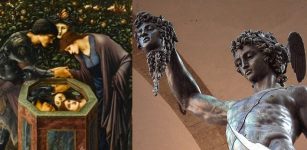 Perseus – Courageous Adventurer Who Fulfilled A Prophecy
Featured Stories | Jul 31, 2018
Perseus – Courageous Adventurer Who Fulfilled A Prophecy
Featured Stories | Jul 31, 2018 -
 Who Made The Mysterious Ancient Cave Paintings And Inscriptions In Oklahoma 2,500 Years Ago?
Featured Stories | Jul 23, 2024
Who Made The Mysterious Ancient Cave Paintings And Inscriptions In Oklahoma 2,500 Years Ago?
Featured Stories | Jul 23, 2024 -
 Stone Age Europe Had Nine Distinct Cultures – Ancient Jewelry Reveals
Archaeology | Feb 3, 2024
Stone Age Europe Had Nine Distinct Cultures – Ancient Jewelry Reveals
Archaeology | Feb 3, 2024 -
 How The Kimono Became A Symbol Of Oppression In Some Parts Of Asia
Featured Stories | Sep 17, 2022
How The Kimono Became A Symbol Of Oppression In Some Parts Of Asia
Featured Stories | Sep 17, 2022 -
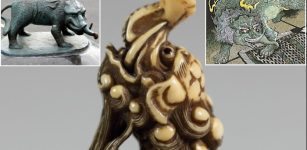 Legend Of Baku – The Dream Eater – Was It An Ancient Supernatural Being?
Featured Stories | Feb 15, 2023
Legend Of Baku – The Dream Eater – Was It An Ancient Supernatural Being?
Featured Stories | Feb 15, 2023 -
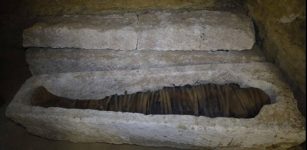 Tombs With Sarcophagi Of High Priests Including One Dedicated To Sky God Horus Unearthed In Egypt
Archaeology | Jan 31, 2020
Tombs With Sarcophagi Of High Priests Including One Dedicated To Sky God Horus Unearthed In Egypt
Archaeology | Jan 31, 2020 -
 ‘The Domesday Book’ Of William I The Conqueror: Detailed Register Of ‘Who Owned What’ In England
Ancient History Facts | Jan 11, 2017
‘The Domesday Book’ Of William I The Conqueror: Detailed Register Of ‘Who Owned What’ In England
Ancient History Facts | Jan 11, 2017 -
 European Medieval Burial Practices Were Different Than Previously Thought
Archaeology | Sep 13, 2021
European Medieval Burial Practices Were Different Than Previously Thought
Archaeology | Sep 13, 2021 -
 Eye Of Horus – Powerful, Ancient Egyptian Symbol With Deep Meaning
Ancient Symbols | Jan 21, 2019
Eye Of Horus – Powerful, Ancient Egyptian Symbol With Deep Meaning
Ancient Symbols | Jan 21, 2019 -
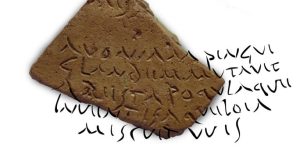 Incredible Discovery Of A Poem By Virgil On A Roman Oil Amphora
Archaeology | Jun 21, 2023
Incredible Discovery Of A Poem By Virgil On A Roman Oil Amphora
Archaeology | Jun 21, 2023 -
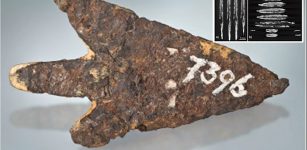 Arrowhead Made Of Meteoritic Iron From The Late Bronze Age Settlement Of Mörigen, Switzerland – Examined
Archaeology | Aug 1, 2023
Arrowhead Made Of Meteoritic Iron From The Late Bronze Age Settlement Of Mörigen, Switzerland – Examined
Archaeology | Aug 1, 2023 -
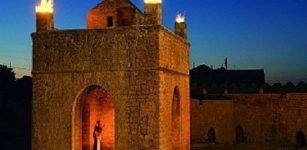 The Third Greatest Fire Temple That Existed In Ancient Iran’s Sassanid Age – Unearthed
Archaeology | Jul 8, 2022
The Third Greatest Fire Temple That Existed In Ancient Iran’s Sassanid Age – Unearthed
Archaeology | Jul 8, 2022 -
 82 Mysterious 3,000-Year-Old Pits Discovered In Sweden – Bronze Age Cooking Pits And Ancient Ceremonial Center?
Archaeology | Jun 13, 2017
82 Mysterious 3,000-Year-Old Pits Discovered In Sweden – Bronze Age Cooking Pits And Ancient Ceremonial Center?
Archaeology | Jun 13, 2017 -
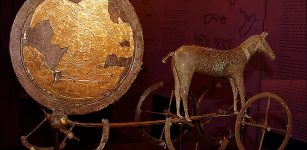 Sun Chariot – Powerful Symbol Of Bronze Age Cosmology
Ancient Symbols | Feb 28, 2018
Sun Chariot – Powerful Symbol Of Bronze Age Cosmology
Ancient Symbols | Feb 28, 2018 -
 Maya Storm God Huracán Taught That When We Damage Nature, We Damage Ourselves
Featured Stories | Oct 4, 2024
Maya Storm God Huracán Taught That When We Damage Nature, We Damage Ourselves
Featured Stories | Oct 4, 2024 -
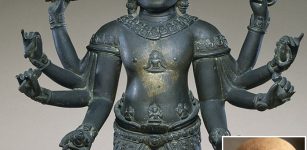 A 1.9-Meter Statue Of A Guard And Part Of A Medicine Buddha Unearthed By Angkor Archaeologists
Archaeology | Sep 1, 2017
A 1.9-Meter Statue Of A Guard And Part Of A Medicine Buddha Unearthed By Angkor Archaeologists
Archaeology | Sep 1, 2017 -
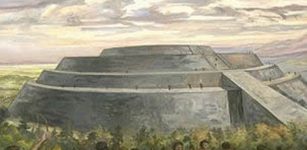 Cuicuilco Circular Pyramid: Ancient Astronomical Observatory And Place Of Power
Civilizations | Aug 24, 2021
Cuicuilco Circular Pyramid: Ancient Astronomical Observatory And Place Of Power
Civilizations | Aug 24, 2021



